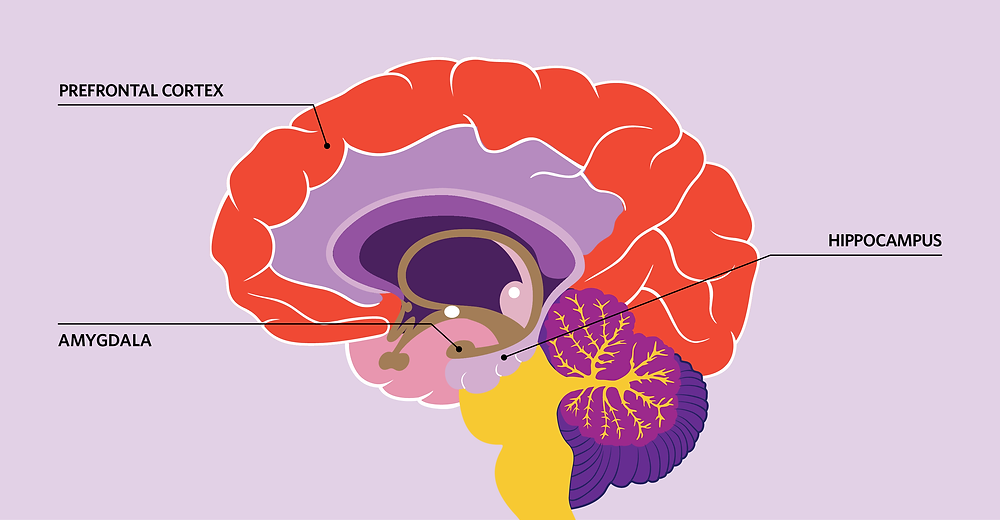An earworm is simply a catchy tune that “nests” in a listener’s mind for hours. Brands use this phenomenon deliberately to leave a lasting impression on consumers and evoke specific associations.
How does it actually work?
Simple, catchy melodies activate the prefrontal cortex and hippocampus—areas of the brain linked to memory and emotions. Once heard, the brain quickly encodes the melody in short-term memory. By mentally repeating it, the tune moves to long-term memory. Specific attributes of the melody cause the brain to unconsciously repeat it, strengthening memory and keeping it active in awareness.

Creating an effective earworm isn’t just luck—it’s an art based on certain principles. The key element is a repetitive, danceable rhythm that makes the melody stick in the listener's ear, making it hard to forget. Simplicity is also crucial—the easier the melody is to remember and hum, the better.
And in marketing practice?
A common trick is to adapt well-known and beloved tunes by adding custom lyrics related to the brand. A perfect example is Lidl, which used a melody by Irena Santor with its own lyrics, or the Bonduelle campaign jingle (“Przebojowe warzywa Bonduelle”) based on the classic “Singing in the Rain.” One of TADADAM's notable projects involved a jingle inspired by the children’s song "If You're Happy and You Know It," which was used in a radio spot for Leroy Merlin. To avoid infantilizing the tone, we altered the melody and replaced the “clap your hands” sound with construction tool noises. Given the employer branding nature of the campaign, we added an unusual twist: we involved a talented vocalist from Leroy Merlin, Monika, who enthusiastically visited our Warsaw studio to sing the custom jingle.
This kind of strategy helps quickly build positive associations because listeners already know and like the original tune. Adding a brand element transfers these positive emotions to the advertised product or service.
Adapting a well-known pop culture song is a common approach, but sometimes brands opt for original compositions that also become earworms—such as the jingles for Merci, Jogobella, Hochland, or Dr. Oetker (“Pizza Guseppe”). A standout global example is McDonald's iconic "I'm Lovin' It."
The creation of McDonald's sound branding arose from a specific business need. In 2003, one of the world’s most recognizable brands faced a massive image crisis. Fourteen of the biggest marketing agencies globally worked on a strategy to save the fast-food giant. The winning idea came from Heye agency, which focused on emotions, basing the new campaign on what is now the famous jingle and slogan, "I'm lovin' it." Not everyone knows that the original jingle for the American fast-food chain was composed by Pharrell Williams, with vocals by Justin Timberlake. Over time, the famous “ba da ba ba ba” became recognized worldwide.
The result? The five-note sequence has become embedded in pop culture, and the campaign boosted McDonald's stock price from $12 to $150 per share. It’s a prime example of how sound can anchor itself so deeply in consumers’ minds that it becomes an integral part of a brand’s identity, fulfilling business needs.

Which marketing goals can it support?
An earworm has the power to make a brand unforgettable and help it stand out from the competition. But how exactly can it support marketing goals? First and foremost, by increasing brand recognition. Think about when you hear a distinctive melody every time you interact with a brand—whether in a store or in a TV commercial—the same catchy sound sequence. Over time, you start to automatically associate the melody with the brand, leading to increased awareness and recall. It’s like an audio stamp that imprints itself in the minds of consumers.
Moreover, earworms help build customer loyalty. Consistently using the same catchy melody during every interaction with the brand creates and strengthens emotional connections and positive associations. Hearing the familiar melody, the consumer begins to link it with positive experiences, which shapes their attitude toward the brand.
Warning, clicking the link below might make this song stick with you for a while!
But what if it’s too annoying?
Some might think: "Okay, but some of these melodies are just irritating! Why don’t brands get rid of them?" Sometimes brands focus on the first stage of the marketing funnel and prioritize intensive brand awareness—even at the cost of sentiment. Paradoxically, even an annoying melody can bring benefits by deeply embedding itself in the listener's mind. Just look at Media Expert’s ads—their iconic "Media Expert - włączamy niskie ceny!" might be irritating, but it’s undeniably memorable, which, depending on the goal, can be crucial for branding. Allegedly, one of the aims of using Ewelina Lisowska’s popular song in their campaign was to change the default association among Polish consumers—from "Media" meaning "Markt" to "Expert."
These are just unofficial industry rumors, and even if they are not true, we can be almost certain that the desired effect was achieved, representing a sensational shift in public awareness.
It’s similar with the ads for Biedronka or Kaufland. Their jingles might be seen as intrusive, but they can be incredibly effective in building brand recognition. Even if the melody seems annoying at first, it might eventually become something familiar and comforting, which, in the long term, can contribute to increased sales and customer loyalty.
Strengthening brand identity through music
The power of earworms can also be leveraged by Love Brands—brands focused on creating a strong emotional bond with their audience. To avoid irritating consumers, however, they must closely monitor reactions to their content and be careful not to overexpose their audience.
Earworm-like melodies may bring the most benefit to brands with extroverted archetypes—those that are approachable, full of energy, passionate, and eager for new experiences. Such brands can use catchy tunes to build dynamic, emotionally engaging communication. Brands that focus on expertise, care, or aspire to be authoritative may consider different musical approaches to better reflect their balanced nature.
At TADADAM, as part of our audio branding strategy, we conduct a comprehensive analysis of a brand's identity. Our proposed solutions are precisely tailored to the brand’s characteristics, including its archetypes, which form the foundation of our strategy.
How to start?
Implementing effective earworms in marketing communication can significantly boost brand recognition, build positive associations, and emotionally engage consumers. We would be delighted to help you achieve these goals. Feel free to contact us, and let’s create unique audio solutions for your brand together.
Authors:
Aleksandra Chróst
Hubert Pyrgies
____________________
Źródła:
Photo by Andrea Piacquadio from Pexels:
https://www.pexels.com/photo/cheerful-man-with-smartphone-drinking-juice-on-street-3799832/
https://www.thebehaviorhub.com/blog/2020/11/2/the-amygdala
https://www.salon.com/2021/02/26/mcdonalds-im-lovin-it-origin-story-20k-hertz/


